Is hyacinth easy to raise? introduction of specific methods
Hyacinth is such a poisonous spirit in the United States. People may not believe that hyacinth is poisonous. It is a famous foreign love flower that conquered the world with beauty and also conquered love. However, hyacinth bulbs are indeed only poisonous, and serious cases can lead to paralysis or even death. Is hyacinth easy to raise? now I will introduce the relevant knowledge to you in detail.
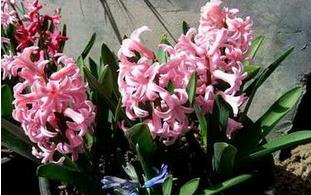
Is hyacinth easy to raise? introduction of specific methods
I. Culture methods of hyacinth
The general method of potted hyacinth culture is to plant bulbs in a nutrition bowl in September, keep them in the sun, move them into a greenhouse in November, and blossom during the Spring Festival the following year. The following details explain the knowledge requirements of hyacinth flower culture.
1. Seed bulb selection: as the nutrients needed for hyacinth flowering are mainly supplied by the nutrients stored in the bulbs and leaves, as long as the epidermis is not damaged, the fleshy scales are not too wrinkled, and the bulbs are hard, heavy and full, can they produce rich and beautiful flowers.
2. Soil requirements: hyacinth culture requires fertile soil and high content of organic matter, and it is best to use sandy soil with good drainage. Before planting, the soil should be humidified and hung for a day before planting. It is required that topdressing is often applied during the growth period, and the soil should be loosened in time after emergence. You can choose to apply topdressing once in winter, before flowering in spring and again after blooming.
3, light: hyacinth culture, to maintain sufficient sunlight in order to ensure normal growth. If the light is too weak, it will lead to hyacinth plant thin, bud small, flowers early Xie, leaves yellow and so on, then the incandescent lamp can be used to fill the light at about 1 meter; but too strong light will also cause leaves and petals to burn or shorten the florescence. Bulbs should not be exposed to direct sunlight before sprouting.
4. Temperature and humidity regulation: too high temperature will lead to abnormal growth of hyacinth, and the rate of blind flowers is too high, preferably less than 15 ℃, which can be increased by spraying, watering on the ground, or ventilated to reduce humidity; while too low temperature will cause frost damage to flower buds, and the root system of hyacinth grows best when the bulb is at 2 to 6 ℃. Soil moisture should be kept between 60-70%, too high, root respiration is inhibited and perishable, too low, the aboveground part wilts, or even dies.
5, water hyacinth: the water surface from the bulb should have 1 Mel 2 cm of space, do not immerse the water at the bottom of the bulb, but should be placed on the bottle surface, after the root, the water level can be reduced to the water surface that can just be touched by the root, so that the root can fully absorb oxygen and promote the growth of the root. After the root is developed, the container can be covered with black cloth to make the ball heel develop further.
At the same time, to keep the water quality in the bottle clean, change the water once a week, such as adding a nutrient solution, depending on the turbid degree of the water, and put it in the shade when the bulb bud grows to 5 meters. Wait for the root system to fully grow and move to the warm southward windowsill with sufficient scattered light, and often add water to soak the bulb.
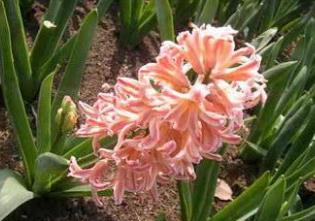
Second, the florescence of hyacinth
The flowering period of Fengxin flowers is usually about two weeks from the beginning of the first flower. It usually blossoms from March to June, and its growth cycle is dormancy in summer, rooting in autumn and winter, sprouting in early spring, flowering in March, and plant withering in early June.
After the Fengxin flower blossoms once, cut off the withered roots and leaves, put them in a cool place or plant in the soil, plant or pot in September, apply base fertilizer and topdressing fertilizer, promote the division of the mother bulb and help the seed bulb grow, and only when it is grown to a certain extent can it bloom again. It can also be planted next spring and blossom again.
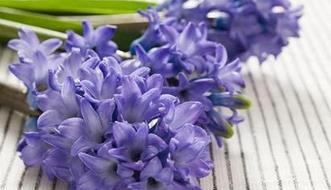
Third, is hyacinth easy to raise
The flower scent of hyacinth will not cause harm to the human body, but if you have allergic skin, there is no guarantee. As a famous foreign love flower, hyacinth in different colors has different love meanings, and what attracts people's attention most are purple hyacinth and blue hyacinth. Although these two colors are not as stunning as peonies when they are in bloom, they are also able to attract people's attention, and the faint and sad words of flowers also increase people's pity for hyacinth.
Hyacinth has been introduced into indoor planting as early as a few decades ago, and it is now able to carry out simple water culture after a long period of cultivation. Hyacinths do not have high requirements for soil and environmental temperature, if they are raised indoors, the temperature is fine as long as they are not too low or too high, while outdoors, as long as you pay attention to the basic cold prevention and do not let frost and snow directly harm hyacinth, it is not a delicate plant, but we also need to take good care of it.
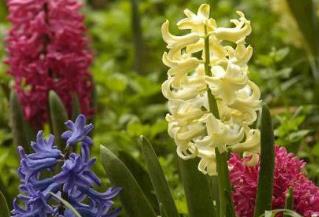
How to raise hyacinth at home
If you have a small bonsai of hyacinths at home, and after a period of careful care, the lovely flowers are in full bloom during the Spring Festival, and the elegant fragrance overflows all over the house, then how to protect the hyacinth:
Habits: hyacinths like a cool, moist and sunny environment. The bulb has the habit of dormancy in summer, rooting in autumn and winter, new buds sprouting in early spring, flowering in February, and plant withering in early June.
Second, cultivation management: the potted hyacinth was planted in a pot of 12-15 rice pots, with 1 bulb in each pot. The basin soil is a mixture of rotten leaf soil, culture soil and coarse sand. After planting, the bulbs were watered thoroughly and placed at 9 ℃ at room temperature. The bulbs grew new roots in about 45-60 days, shaded and decreased the room temperature for 7-10 days, and then adjusted the room temperature to 17-18 ℃ during the day and no more than 12 ℃ at night until flowering.
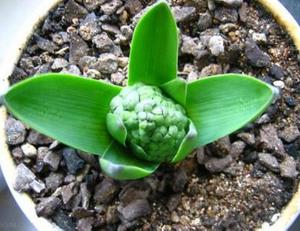
Third, moisture: the water requirement of hyacinth varies with its growth stage. It is better to moist slightly during the rooting period of the bulb. Sufficient water is needed during leaf growth and budding and flowering stage. The amount of water should be reduced in the full flowering period, and the bulb should stop watering in the dormant period to keep it dry.
Fourth, lighting: hyacinth leaves in early spring need sufficient sunshine, after flowering, the semi-shaded place can prolong the flowering period. In promoting cultivation, sufficient sunlight is needed when the leaves grow to a certain height to promote the elongation of flower stems and accelerate flowering.
5. Pest control: Sclerotinia sclerotiorum disease harms seedlings and bulbs, broken petal disease harms flowers and stem nematodes, and can be sprayed with Bordeaux solution or carbendazim 400 times solution.
How to raise hyacinth at home
If you have a small bonsai of hyacinths at home, and after a period of careful care, the lovely flowers are in full bloom during the Spring Festival, and the elegant fragrance overflows all over the house, then how to protect the hyacinth:
Habits: hyacinths like a cool, moist and sunny environment. The bulb has the habit of dormancy in summer, rooting in autumn and winter, new buds sprouting in early spring, flowering in February, and plant withering in early June.
Second, cultivation management: the potted hyacinth was planted in a pot of 12-15 rice pots, with 1 bulb in each pot. The basin soil is a mixture of rotten leaf soil, culture soil and coarse sand. After planting, the bulbs were watered thoroughly and placed at 9 ℃ at room temperature. The bulbs grew new roots in about 45-60 days, shaded and decreased the room temperature for 7-10 days, and then adjusted the room temperature to 17-18 ℃ during the day and no more than 12 ℃ at night until flowering.

Third, moisture: the water requirement of hyacinth varies with its growth stage. It is better to moist slightly during the rooting period of the bulb. Sufficient water is needed during leaf growth and budding and flowering stage. The amount of water should be reduced in the full flowering period, and the bulb should stop watering in the dormant period to keep it dry.
Fourth, lighting: hyacinth leaves in early spring need sufficient sunshine, after flowering, the semi-shaded place can prolong the flowering period. In promoting cultivation, sufficient sunlight is needed when the leaves grow to a certain height to promote the elongation of flower stems and accelerate flowering.
5. Pest control: Sclerotinia sclerotiorum disease harms seedlings and bulbs, broken petal disease harms flowers and stem nematodes, and can be sprayed with Bordeaux solution or carbendazim 400 times solution.
Related
- Wuhan Hospital Iron Tree Blooming Result Was Instantly Frightened by the Gardener Master
- Which variety of camellia is the most fragrant and best? Which one do you like best?
- What is the small blue coat, the breeding methods and matters needing attention of the succulent plant
- Dormancy time and maintenance management of succulent plants during dormancy
- Minas succulent how to raise, Minas succulent plant pictures
- What are the varieties of winter succulent plants
- How to raise succulent plants in twelve rolls? let's take a look at some experience of breeding twelve rolls.
- Attention should be paid to water control for succulent plants during dormant period (winter and summer)
- Watering experience of twelve rolls of succulent plants
- Techniques for fertilizing succulent plants. An article will let you know how to fertilize succulent plants.



